Tech Classics: Timeless Books Every Techie Should Read
Reading as a techie is even more challenging than reading as a reader. There is barely enough time to pick up a tech classics book or even flip a few pages in this fast-paced technological world. However, we are aware that book pages contain some of the industry’s most in-depth knowledge. The best book to read during your ever-busy tech schedule is one that has a direct impact on your skillset and career development.
It’s easy to get caught up in the newest gadgets and trends in a fast-paced and ever-evolving field like technology. Yet, we should not fail to remember the ageless insight that exists in the pages of those believed books that have endured over the extremely long haul. These gems, which provide insights and knowledge that have the potential to profoundly alter our understanding of technology, are like undiscovered treasures.
What is the goal of this article? Simple. We are here to suggest some of the most timeless and influential books that every tech enthusiast should read. These books have the ability to spark your imagination, test your thinking, and broaden your perspective. Let’s get started and see what surprises us within these classics!
Must-Read Tech Classics: Foundational Books
“The Design of Everyday Things” by Don Norman
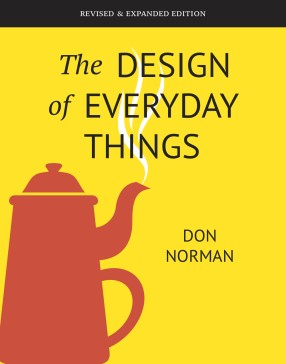
A. Exploring the importance of user-centred design
“The Design of Everyday Things” by Don Norman. This masterpiece is all about user-centred design, which basically means making products that are easy to use and natural. Norman takes us on a journey through the world of everyday objects to demonstrate how design choices profoundly affect our experiences.
When we can’t figure out which light switch, oven burner, or door to push, pull, or slide, even the smartest of us can feel stupid. This clever, even liberating book contends that the problem lies not with us but rather with product design that disregards user requirements and cognitive psychology principles.
In addition to a lack of feedback or other assistance, the issues include ambiguous and hidden controls, arbitrary relationships between controls and functions, and unreasonable demands on memorization. The Design of Everyday Things demonstrates the possibility of good, practical design. Simple guidelines apply: make things visible, make use of natural relationships between control and function, and use constraints wisely.
B. Key principles and lessons from the book
- Feedback and Visibility: Norman points up the importance of providing users with clear and fast feedback. We should be able to understand the state of a product and its outcomes when we interact with it.
- Mapping: The need for a logical and easy-to-understand connection between the controls and their functions is emphasiz by this principle. The physical or digital components of a well-designed product should naturally correspond to their deliberate actions.
- Signifiers and Benefits: Norman explores the idea of affordances, which are the perceived options for actions that an interface or object provides. On the other hand, signifiers are indicators that indicate possible interactions. Designers can create interfaces that are user-friendly and easy to find by understanding these concepts.
C. Influence on the field of interaction design
- Importance of user-centred design: We can make products that are not only useful but also fun to use if we put the needs and experiences of users first.
- Good design is invisible: Users don’t even need to think about it when the design is done well. The focus should be on giving a seamless experience instead of causing to notice the actual plan.
- Iteration is the key: We are able to continuously improve our products and meet the changing requirements of users by collecting feedback, testing, and iterating.
“Clean Code: A Handbook of Agile Software Craftsmanship” by Robert C. Martin
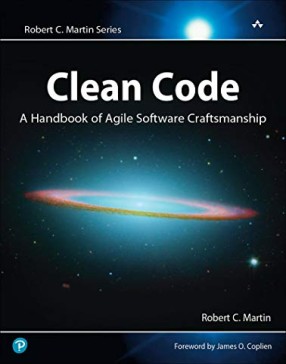
A. Understanding the significance of clean and maintainable code
This book is like a lighthouse for developers, highlighting the significance of writing code that is easy to read, maintainable, and clean. Based on their extensive software development experience, the authors of “Clean Code” offer their perspectives on clean code as a school of thought. Some of the ideas are up for debate, while others can be support. The author, Uncle Bob, makes it abundantly clear that numerous other definitions of clean code exist. The opinion should not be taken as absolute truth; rather, it should be viewed as an excellent chance to learn.
B. Four Principles and best practices advocated in the book
- Executes all tests: Composing tests drives you to test the plan of your code as a customer. As important as maintaining clean code is maintaining clean tests.
- There is no duplicate: Well-designed systems are especially vulnerable to duplicates. The complexity of the system as a whole can be reduce by extracting commonality at very small levels.
- Expresses the programmer’s intention: The author’s intent should be made abundantly clear in the code. In order to make it easier to convey the goal, effective names, small functions and classes, consistent nomenclature, and well-written unit tests can all be use.
- Reduces the number of methods and classes: a means of avoiding dogmatism and working harder to capture the design’s essence
C. How it promotes collaboration and productivity in software development
How to write clean code? Principles, patterns, and practices It covers a lot of ground; Comments, naming, functions, data structures and objects, etc. a few that I particularly enjoy: Step-down rules to organize code, one level of abstraction per function, and learning tests for third-party dependencies.
Case studies of code cleaning. Case studies focus on: the Command-line argument parser has been rewritten; internal refactoring of JUnit; the JCommon library’s SerialDate class’s refactoring. Examining the author’s thought processes and the transformation of the code is very interesting.
It explains how developers think as they write, read, and clean code. Many of the code smells are taken from Martin Fowler’s book “Refactoring.” Some of the intriguing odours include the code’s inconsistency; a lack of accountability; structure, not convention, should be used to enforce design; staying away from negative conditionals; pick names with enough level of abstraction.
“The Art of Computer Programming” by Donald E. Knuth
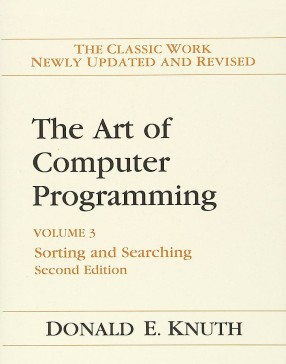
A. Overview of the book’s comprehensive coverage of algorithms and programming
“The Art of Computer Programming” is not your typical programming book. From the fundamental algorithms to the intricacies of data structures and their analysis, it is an all-encompassing masterpiece. Knuth writes in an engaging and informative style, making difficult concepts understandable to readers of all levels of expertise.
Knuth’s extensive algorithm analysis can be found in The Art of Computer Programming. It continues to be the definitive description of classical computer science with the addition of this new volume.
Backtrack Programming is cover in detail at the start of the book. With a collection of data structures links that perform “delightful dances” and are perfectly suit to this field. New strategies for significant applications, for example, ideal parcelling and design are in this manner create.
The writing style of Knuth is lighthearted, and he includes a plethora of puzzles. To demonstrate the algorithms and methods from well-known classics like edge-matching to more recent fads like sudoku. Computer scientists and recreational mathematicians will not be let down!
B. Impact on computer science education and practice
Satisfiability, one of the most fundamental issues in computer science, is address by Knuth. Applications for optimal scheduling, circuit design, and hardware verification have changed the game thanks to cutting-edge methods developed at the beginning of the 21st century. Computers are now able to solve real-world problems with millions of variables that were thought to be hopeless just a few years ago thanks to these tools.
The book’s Mathematical Preliminaries Redux section is a real treat because it covers fundamental probability theory methods that have gained popularity since the first “preliminaries” were discussed in Volume 1.
The book, like every other volume in this remarkable series, has hundreds of exercises that use Knuth’s clever rating system. This makes it easy for readers with different levels of mathematical training to find challenges that are right for them. In order to make self-study easier, comprehensive responses are provided.
C. Recognizing its status as a timeless reference
“The Art of Computer Programming”‘s status as a timeless reference is one of its remarkable qualities. Even though it was written several decades ago, the ideas and principles it lays out are still useful and relevant today.
Computer science is a field that is always changing, with new paradigms and technologies appearing frequently. However, this book’s fundamental ideas have stood the test of time. Knuth’s method of algorithmic thinking, mathematical analysis, and problem-solving transcends particular programming languages or trends.
Tech Classics: Deep Dives into Specific Topics
“Introduction to the Theory of Computation” by Michael Sipser
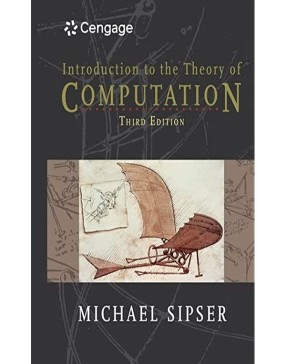
A. Exploring the fundamentals of computation theory
Michael Sipser’s widely acclaimed textbook, “Introduction to the Theory of Computation,” is a comprehensive introduction to the theory and principles of computation. Students and professionals in theoretical computer science alike will find this book to be an essential resource. It provides readers with the necessary tools to comprehend and analyze computational problems and covers a wide range of subjects with its clear explanations, rigorous analysis, and numerous examples.
You’ll learn topics like Turing machines, regular languages, context-free grammar, and more in this book. Sipser’s explanations are easy to understand and clear, making it possible to comprehend even the most complex ideas. Anyone who is interested in the theoretical underpinnings of computer science will find this to be an excellent resource.
B. Applications in the field of computer science
Design of the CPU: For creating powerful and effective compilers, this book’s principles and concepts are essential. The development of parsers and translators that translate high-level programming languages into machine-readable code is made easier by our comprehension of formal and automata languages.
Design of Algorithms: Insights into the limits of what is computationally feasible are provided by computation theory. This understanding helps us with planning calculations that take care of issues productively, upgrading asset use and time intricacy.
Cryptography: The book discusses issues that are connect to complexity theory, which is an important part of cryptographic algorithms. We can develop safe encryption and decryption strategies to safeguard sensitive data by examining the limits of computation.
Artificial Intelligence: Understanding what can and cannot be compute is built on the foundation of computation theory. For intelligent system design, machine learning algorithm development, and research into artificial intelligence’s potential and limitations, this knowledge is necessary.
C. How it contributes to a deeper understanding of algorithms and complexity
All through the book, Sipser presents the material in a reasonable and open way. Numerous examples and diagrams support the understanding of the concepts and accompany the explanations. The book is suitable for both beginners and those with a stronger mathematical background because the author strikes a balance between formal rigour and intuitive explanations.
The inclusion of exercises at the conclusion of each chapter is a notable feature of the book. These exercises include simple practice problems as well as more difficult proofs and exploratory questions. They give readers a chance to test their comprehension and improve their ability to solve problems. The book also includes historical notes and biographies of important people in the field, which give the information more context and interest.
“The C Programming Language” by Brian W. Kernighan and Dennis M. Ritchie
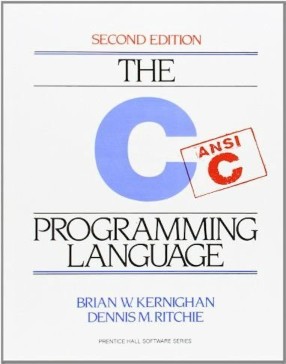
A. Summary and significance of C programming language
The best book on the C programming language is The C Programming Language by Kernighan and Ritchie. Although it is a compact volume, the preface states that “C is not a big language, and it is not well serve by a large volume.” Totally agree. Books the size of a small tower block can be intimidating and deter potential readers.
The language as defined by the ANSI standard is discuss in the book. This is significant on its own. Any standard-compliant compiler can work with code written with Standard C constructs. When switching compilers or platforms, this reduces the amount of code rework.
C’s ability to strike a balance between high-level and low-level programming is what makes it so important. It gives developers accurate control over memory management and system resources, allowing them to write code close to the hardware.
B. Comprehensive coverage of C syntax and concepts
Data Types and Syntax: The book goes into detail about the fundamentals of C by describing its syntax, variable declarations, and data types. It covers everything from straightforward variables to intricate arrays and structures.
- Control Stream and Functions: For writing code that is both effective and well-organized, it is essential to comprehend control flow. The book delves into the idea of functions and modular programming. As well as control structures like loops and conditional statements.
- Management of Pointers and Memory: The book guides readers through the complexities of working with pointers and C’s powerful pointer operations. Additionally, it discusses methods for managing memory, such as deallocation and dynamic memory allocation.
- Output and Input: The book walks you through how to handle input and output operations in C, such as handling files and formatting data for display.
C. Enduring relevance in embedded systems and low-level programming
The book begins with a tutorial introduction that demonstrates the fundamental features of the language in real-world applications. Because it is primarily an overview, rules and specifics are not the primary focus. It focuses on the fundamentals: Arithmetic, variables and constants, control flow, functions, and some input and output are all included. After that, the book moves on to Types, Operators, Expressions, Control Flow, and all other aspects.
In addition, C is ideal for low-level programming due to its compatibility with assembly language and its capacity to generate machine code that is both compact and fast. It lets developers get really deep into the system and interact directly with hardware parts, like writing device drivers or putting together real-time systems.
Conclusion
As we come to a close on our reading of tech classics, let’s keep in mind the value of ongoing education, the excitement of discovery, and the profound influence that tech literature can have on our lives. Let these books be our companions on our journey toward development, innovation, and making a significant contribution to the technological community.
Also Read
5 Best Technology Books You Must Read Right Now
Quantum Computing: Unveiling the Top Books for Quantum Enthusiasts
